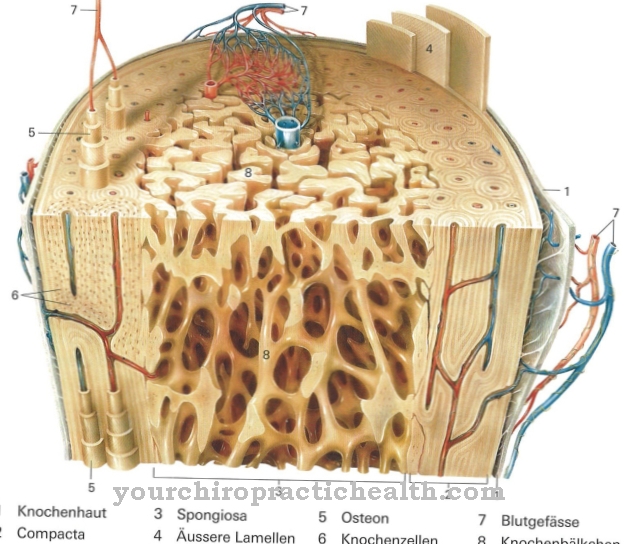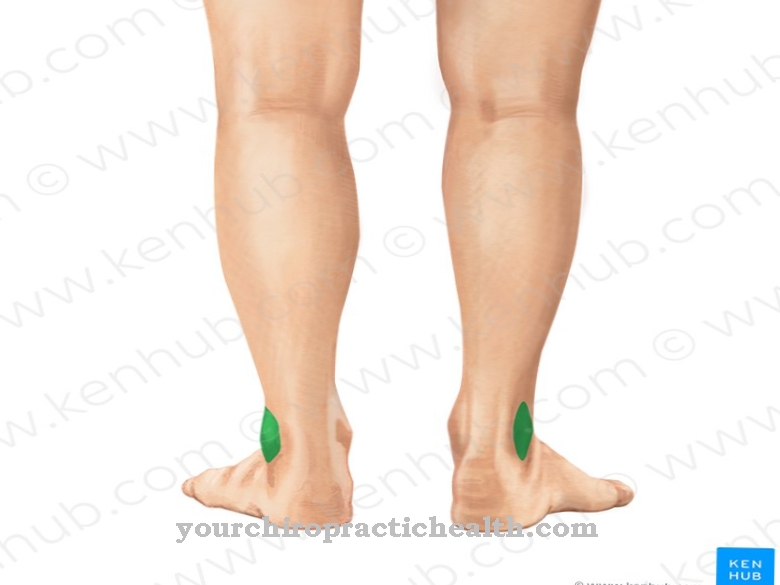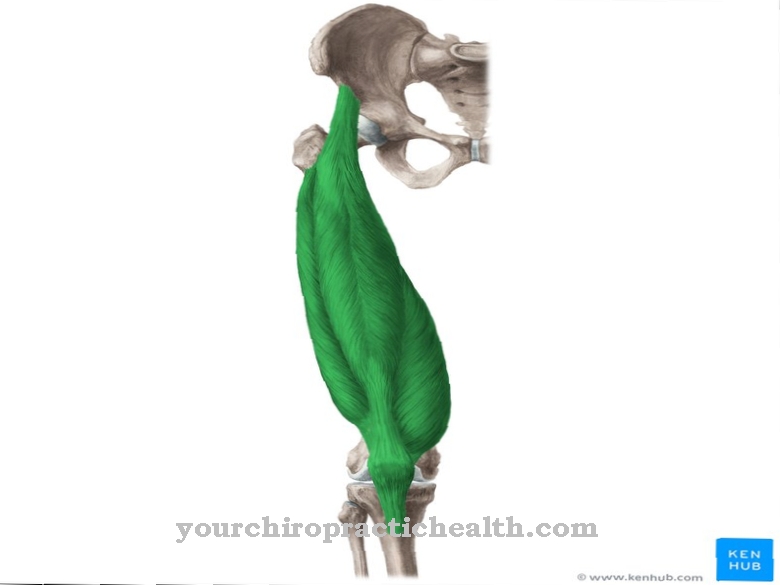For diseases like glaucoma (glaucoma) is the Intraocular pressure greatly increased. Over 900,000 people in Germany suffer from this disease, although the number of unreported cases is probably much higher. This results in damage to the optic nerve, which can only be prevented by regularly checking the intraocular pressure.
What is intraocular pressure?
The pressure in the eye (tensio) is of great importance. Also known as intraocular pressure, it refers to the physical pressure that is placed on the inner wall of the eye. It is regulated by the aqueous humor outflow and inflow in the eye.
Formed within the middle skin of the eye - more precisely, in the ciliary body - the aqueous humor penetrates through the pupil into the eye and regulates the intraocular pressure there. Usually the normal value is between 10 and 21 mmHg. With what is known as tonometry, a doctor can determine the pressure and thus decide whether it is on average. The person skilled in the art summarizes various measurement methods under the term tonometry. This includes, for example, non-contact tonometry, in which the cornea is flattened with the help of a puff of air.
Depending on the resistance, the internal pressure of the eye can be determined. Experienced doctors can use estimates to achieve a value that is accurate to within 2 mmHg. A slight pressure is applied to the closed eye. However, the intraocular pressure fluctuates throughout the day, which is why regular measurement is useful in the event of complaints.
Anatomy & formation
The ciliary body lies between the iris and the lens. The epithelium of the ciliary body is responsible for the formation of the regulating aqueous humor. The doctor describes the tissue and cell layers as epithelium. The aqueous humor enters the anterior chamber of the eye between the iris and the lens. Most of it flows through chambers and ducts into the episcleral venous system.
The amount of aqueous humor determines the pressure in the eye and is therefore also responsible for the alignment of the photoreceptors in the eye. Permanent dysregulation of intraocular pressure can damage the eye. A constant intraocular pressure of over 21 mmHg is harmful to the optic nerve, which lies behind the vitreous humor and is responsible for transmitting information to the brain.
Function & tasks
The internal pressure of the eye plays a decisive role in clear vision. It has an important function in the complex processing of images. The pressure is responsible for the constant distance between the lens, retina and cornea and bulges the surface of the cornea. He gives it its characteristic shape and keeps it upright permanently.
If the pressure is in the normal range, the optic nerve can forward the recorded images to the brain, where they are processed further. Diseases of the chamber angle lead to the fact that the supply of aqueous humor is disturbed. The intraocular pressure increases and thus causes damage. Thus, the mechanisms in and around the eye interact with one another and are dependent on one another in order to enable a clear view.
You can find your medication here
➔ Medicines for visual disturbances and eye complaintsDiseases
In addition to diseases of the chamber angle, an increased outflow of aqueous humor can also lead to an imbalance. If more aqueous humor is removed than the eye can produce, the pressure inside the eye increases. Everyone has a personal tension tolerance, which means that a slight increase in intraocular pressure can be coped with. These limits are individually determined. If the increase in pressure continues over a longer period of time and continues to rise, severe damage to the optic nerve is to be expected.
On the other hand, even a normal value can lead to glaucoma. This is related to a reduced personal tolerance limit and must be determined individually with a doctor. In order to assess all glaucomas, it is therefore important not only to pay attention to the intraocular pressure, but also to address any patient complaints. Regular examinations are recommended from the age of 40, as there are a number of risk factors that promote an increase in intraocular pressure and thus the development of glaucoma.
The higher the pressure, the higher the risk of permanently damaging the optic nerve and developing glaucoma. If patients have increased intraocular pressure, but no changes in the optic nerve, the specialist speaks of ocular hypertension. Otherwise there is no connection between blood pressure and intraocular pressure. The daily fluctuation range and the treatment, however, are similar. The intraocular pressure is usually highest in the morning. However, these guidelines are undermined in glaucoma patients. Treatment can be done in different ways.
On the one hand, the production of aqueous humor can be increased, on the other hand it is also possible to regulate the outflow. Usually such a normalization or regulation of the supply and discharge of aqueous humor takes place via the administration of medication. The eye drops used for this are known as anti-glaucoma. Beta blockers also work successfully against increased intraocular pressure. Various other drugs, such as alpha agonists, can also be used to lower the pressure.
In addition to these methods, surgical interventions are also possible. They take place when the administration of the preparations produces no or an unsatisfactory result. In some cases both are used in parallel. One option for surgical treatment is a trabeculotomy. The operation time is normally only half an hour. During the procedure, the surgeon will normalize the drainage of the aqueous humor by probing the affected annular canal. Another option is different laser treatments that are supposed to achieve the same result.













.jpg)

.jpg)
.jpg)











.jpg)